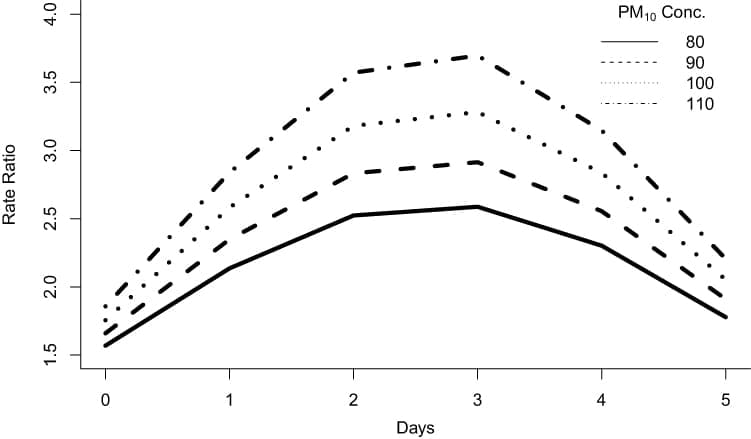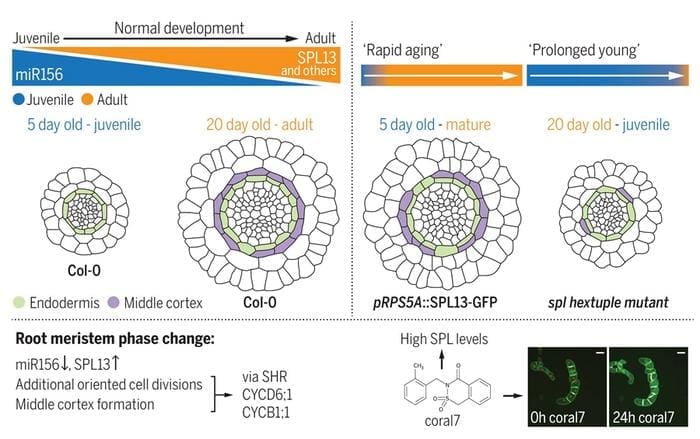Air pollution and eye health: CU Anschutz study highlights emerging risks
A new study from the University of Colorado Anschutz Medical Campus reveals a striking correlation between climate change-induced air pollution and an increase in ocular surface conditions.
Published in Clinical Ophthalmology, the research analyzed 144,313 ocular surface irritation and allergy visits in Denver, identifying a significant rise in visits during periods of elevated particulate matter (PM) levels in the atmosphere.

The study found that when PM10 concentrations reached 110, daily clinic visits were 2.2 times higher than average. Among the conditions observed, conjunctivitis was notably prevalent, accounting for one-third of all cases. Researchers attribute this trend to socioeconomic and environmental factors, such as temperature, humidity, and air quality, and noted a growing global prevalence of allergic conjunctivitis.
Lead author Dr. Jennifer Patnaik, MHS, assistant professor of epidemiology and ophthalmology at the University of Colorado School of Medicine, emphasized the urgency of addressing health impacts associated with air pollution.
“Research on the topic of ocular conditions and climate is still in its early stages; therefore, more studies are needed to better understand how climate and air pollutants impact eye health.”
Co-author Dr. Katherine James highlighted the broader implications of climate stressors, such as wildfires, temperature, and drought, calling for transdisciplinary approaches to mitigate health risks.
The team aims to expand their focus beyond Colorado to explore preventive measures tailored for vulnerable populations exposed to high pollution levels.
Journal Reference:
Jennifer L Patnaik, Amy Dye-Robinson, Katherine A James, Malik Y Kahook, ‘Association Between Particulate Matter Pollutants and Ophthalmology Visits for Ocular Surface Irritation and Allergy’, Clinical Ophthalmology 18:3263-3270 (2024). DOI: 10.2147/OPTH.S485199
Article Source:
Press Release/Material by University of Colorado Anschutz Medical Campus
Resilience index: rethinking success beyond GDP
Researchers from the University of Southampton, UCL, and the University of East Anglia are advocating for the adoption of a “resilience index” to replace GDP as a measure of policy success.
Published in One Earth, the paper outlines how this index could provide a more comprehensive understanding of sustainable progress by integrating environmental, social, and economic dimensions.
Lead author Professor Ian Townend explained: “Resilience is about the ability of a system to prepare for, resist, recover and adapt to disturbances in order to function successfully.” The proposed index would measure the ability of societies to navigate planetary boundaries while ensuring social equity.
The study critiques GDP for neglecting the broader impacts of resource exploitation and its failure to address the interconnected challenges of climate change, biodiversity loss, and pollution. Instead, the resilience index offers a quantitative approach to assess the preparedness and adaptability of systems at local, national, and global levels.
Using case studies, the researchers demonstrated how the resilience of England’s coastal communities could be modeled by weighing factors like human health, economic impacts, and habitat loss. A global analysis revealed a trend toward progress in social measures at the expense of environmental resilience between 1992 and 2015.
Co-author Professor Robert Nicholls underscored the urgency of shifting from GDP to metrics that address societal and ecological interdependence. “We urgently need to think about how we mobilize a global change in outlook,” he stated.
Journal Reference:
Ian Townend, Jon French, Robert Nicholls, ‘Framing resilience to manage complex environmental systems’, One Earth (2024). DOI: 10.1016/j.oneear.2024.09.008
Article Source:
Press Release/Material by University of Southampton
Researchers uncover mechanism of root morphology change and thickening
The key to three-dimensional plant architecture lies in precise control over the orientation of cell division. Plant cells divide periclinally to grow radially – leading to thickening – while anticlinal division promotes longitudinal growth. This interplay between division orientations forms the diverse plant structures seen in nature.
In a breakthrough study published in Science, international researchers have identified mechanisms driving age-dependent morphological changes occurring in the root apical meristem during phase change.

“Decoding the mechanisms governing cell division orientation holds great promise for reshaping plant structure at the cellular level,” said Professor YANG Baojun of the Institute of Genetics and Developmental Biology (IGDB) of the Chinese Academy of Sciences, lead researcher of the study.
This research reveals molecular pathways that can significantly enhance crop resilience by reshaping root morphology and thickness.
In collaboration with Dr. Bert De Rybel’s team at Ghent University, YANG and his colleagues created a cell-based screening system to identify small molecules that influence the orientation of plant cell division, testing over 15,000 compounds.
They discovered a compound named “coral7” that affects the transcription factor SPL13 (SQUAMOSA PROMOTER BINDING PROTEIN-LIKE), a critical regulator of root meristem development. SPL13 can influence root meristem thickness by modulating cell division orientation, presenting a promising strategy for root structure redesign, the study found.
Further analysis of SPL13’s function in the root meristem showed notable morphological changes over time, including middle cortex formation and significant thickening of the meristematic zone.
Unlike the wild type, spl mutants displayed defects in middle cortex formation and meristem thickening, underscoring SPL’s critical role in cell division orientation. Studies in monocots, such as rice, confirmed SPL’s conserved function in controlling cell division orientation and root thickening, marking it as a key gene for root thickness optimization.
This research highlights how spatiotemporal morphological changes in roots are regulated by the SPL module, providing a genetic basis for root system improvements, such as thickening and resilience enhancement.
These findings may drive future innovations in crop breeding for water and nutrient-efficient crops, an urgent need in global agriculture, according to YANG.
***
The research was supported by the National Natural Science Foundation of China, the European Research Council, the Research Foundation-Flanders, and the China Scholarship Council.
Journal Reference:
Baojun Yang et al. ‘SPL13 controls a root apical meristem phase change by triggering oriented cell divisions’, Science 386, eado4298 (2024). DOI: 10.1126/science.ado4298
Article Source:
Press Release/Material by CHEN Na | Chinese Academy of Sciences (CAS)
Featured image credit: Gerd Altmann | Pixabay




